The navy put on a show of combat readiness and live fire drills on the third day of the annual Han Kuang military exercises, in the biggest naval drill in 25 years.
Twenty-one ships, marine patrol aircraft and F-16 and F-5 jets took part in the exercises held off the coast of Yilan and Hualien counties, watched by President Ma Ying-jeou (馬英九).
A separate drill, involving 67 vessels, was conducted off the southwest coast.

Photo: Liao Chen-huei, Taipei Times
The vessels taking part in the exercise off the east coast included Keelung-class destroyers, Chengkung-class frigates, a Lafayette-class frigate, Knox-class frigates, Kuang Hua VI-class missile boats and a submarine, navy spokesman Vice Admiral Wen Cheng-kuo (聞振國) said.
More than 2,000 navy personnel took part in the exercise, which involved live firing of depth charges, 76mm naval guns, 5-inch guns and other weaponry to fend off attacks by enemy forces, he said.
The maritime drills were meant to simulate intrusion into Taiwan’s waters by Chinese forces, and show that the navy can repel such attacks.
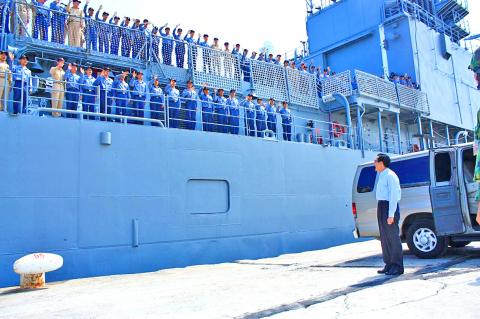
Photo: Courtesy of Huadong Defense Command
Asked how the drill would prepare for the possibility of a conflict in waters around the Diaoyutai Islands (釣魚台), which are claimed by Taiwan, China and Japan —where they are known as the Senkaku Islands — Wen said the ships from the naval bases in Suao (蘇澳), Yilan County, and Keelung (基隆) would engage the enemy.
Ma boarded the Tsoying (左營艦), a 9,525-tonne Keelung-class destroyer at the Suao port.
He watched the drill from aboard the destroyer, which sailed more than 15 nautical miles (28km) offshore for a series of naval maneuvers, and was later joined by other vessels in battle fleet formation.
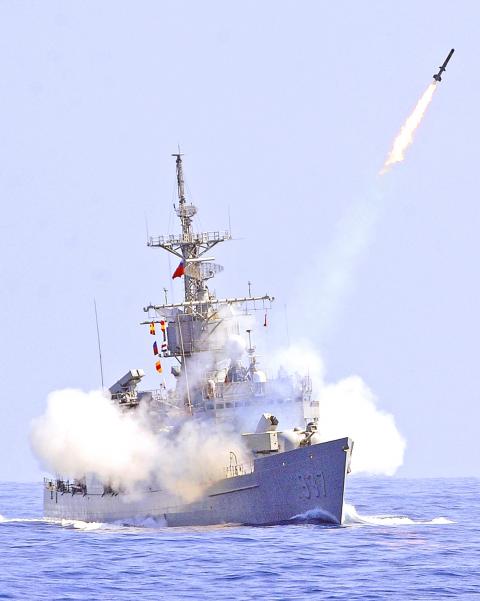
Photo: Liao Chen-huei, Taipei Times
The Tsoying returned to shore, accompanied by another Keelung-class destroyer, the Makong (馬公艦), and docked in Hualien’s port early in the afternoon.
It was the first time Ma had watched a maritime drill held in waters off Taiwan from aboard a ship since he became president in 2008.
The four-hour drill started with air, surface and submarine attacks by the simulated enemy. The navy responded by deploying various warships to counter the attacks. F-16 jets were used to simulate enemy aircraft and launch a missile attack, which the navy responded to with anti-missile maneuvers.
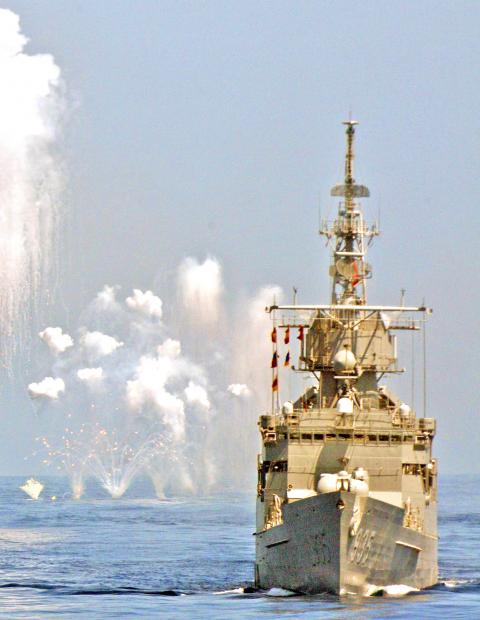
Photo: AFP
The navy and air force conducted a joint anti-submarine operation, with P-3C aircraft and an S-70C helicopter deployed to identify the enemy submarine and force it to the surface.
The drill marked the first time a P-3C, of which Taiwan took delivery from the US last year, has been used in a Han Kuang drill, Ministry of Defense spokesman Major General David Lo (羅紹和) said.
The Ministry of National Defence bought 12 P-3Cs and the final batch is scheduled to be delivered by the end of next year.
After the submarine maneuver, the navy ships launched a joint attack, firing their guns at a simulated target.
Yesterday’s live fire drill concluded with an F-16 firing an AIM-9P4 Sidewinder missile at the simulated enemy approaching from the sea.
Two more live fire drills are scheduled to be held today in waters off Penghu and at a military training base in Pingtung County.
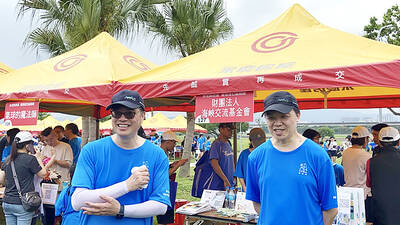
SECURITY: As China is ‘reshaping’ Hong Kong’s population, Taiwan must raise the eligibility threshold for applications from Hong Kongers, Chiu Chui-cheng said When Hong Kong and Macau citizens apply for residency in Taiwan, it would be under a new category that includes a “national security observation period,” Mainland Affairs Council (MAC) Minister Chiu Chui-cheng (邱垂正) said yesterday. President William Lai (賴清德) on March 13 announced 17 strategies to counter China’s aggression toward Taiwan, including incorporating national security considerations into the review process for residency applications from Hong Kong and Macau citizens. The situation in Hong Kong is constantly changing, Chiu said to media yesterday on the sidelines of the Taipei Technology Run hosted by the Taipei Neihu Technology Park Development Association. With
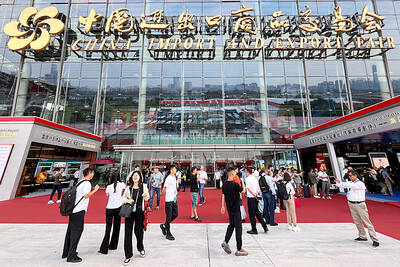
CARROT AND STICK: While unrelenting in its military threats, China attracted nearly 40,000 Taiwanese to over 400 business events last year Nearly 40,000 Taiwanese last year joined industry events in China, such as conferences and trade fairs, supported by the Chinese government, a study showed yesterday, as Beijing ramps up a charm offensive toward Taipei alongside military pressure. China has long taken a carrot-and-stick approach to Taiwan, threatening it with the prospect of military action while reaching out to those it believes are amenable to Beijing’s point of view. Taiwanese security officials are wary of what they see as Beijing’s influence campaigns to sway public opinion after Taipei and Beijing gradually resumed travel links halted by the COVID-19 pandemic, but the scale of
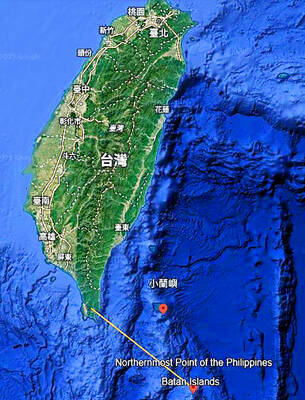
A US Marine Corps regiment equipped with Naval Strike Missiles (NSM) is set to participate in the upcoming Balikatan 25 exercise in the Luzon Strait, marking the system’s first-ever deployment in the Philippines. US and Philippine officials have separately confirmed that the Navy Marine Expeditionary Ship Interdiction System (NMESIS) — the mobile launch platform for the Naval Strike Missile — would take part in the joint exercise. The missiles are being deployed to “a strategic first island chain chokepoint” in the waters between Taiwan proper and the Philippines, US-based Naval News reported. “The Luzon Strait and Bashi Channel represent a critical access
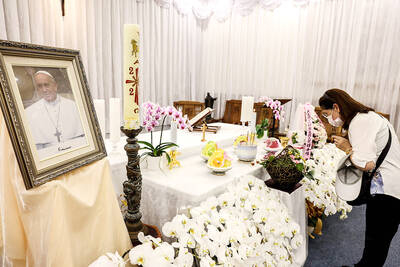
Pope Francis is be laid to rest on Saturday after lying in state for three days in St Peter’s Basilica, where the faithful are expected to flock to pay their respects to history’s first Latin American pontiff. The cardinals met yesterday in the Vatican’s synod hall to chart the next steps before a conclave begins to choose Francis’ successor, as condolences poured in from around the world. According to current norms, the conclave must begin between May 5 and 10. The cardinals set the funeral for Saturday at 10am in St Peter’s Square, to be celebrated by the dean of the College